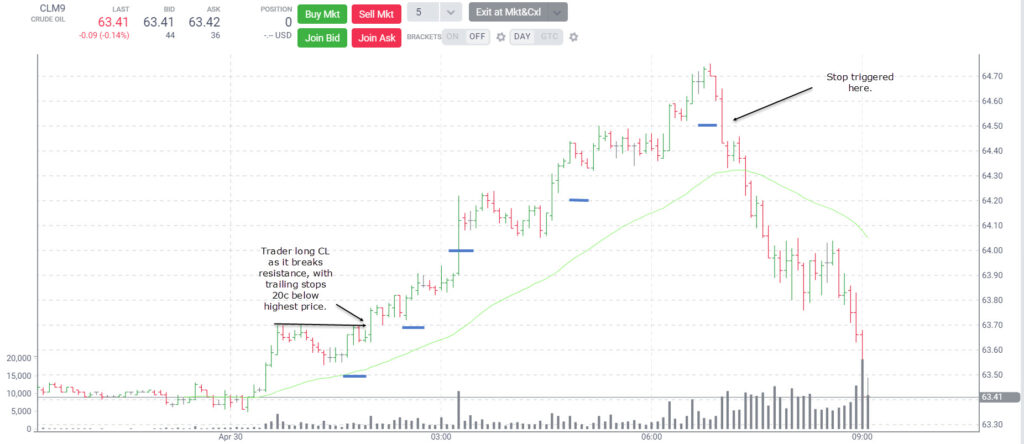Home › Market News › 5 Ways to Stop Gifting Money to the Markets – Part 2: Ride the Trend
Studies show that we, as human beings, feel the sting from losses to a greater degree than the sense of gratification from winning. That means we would rather not lose than actually win. For that reason, traders sometimes make the mistake of cutting winners too soon and letting losers run. It’s a form of self-sabotage that has ruined more than one trading account.
(Note: this is the second in a five-part series. If you missed them, check out Part 1, Part 3, Part 4, and Part 5)
Investor decision making and psychology have been the subject of numerous studies. Amos Tversky and Daniel Kahneman are perhaps the two most well-known researchers in the field. Among their conclusions, they find that people are typically loss averse; we prefer to avoid losses rather than seek gains. It feels better not to lose $100 than it does to win $100. (Much of their work is summarized in the bestselling book Thinking, Fast and Slow.)
Traders are typically willing to lose some money because a successful career as a trader promises the potential for large returns over the years. Losses will happen. Problems associated with loss aversion can occur when…
The solution? A stop-loss.
A well-placed stop-loss can help by forcing exits out of losing trades. Say, for example, the outlook for crude oil is bullish on a move above resistance at $63.70 (Figure 1). A stop-loss is placed 20¢ below the entry price, or at $63.50, when the order is executed. Therefore, on a drop to $63.50, the position is liquidated. Trade is over.

Figure 1: CL Futures (June) 5-Minute Chart
Tip #1: Enter a stop-loss order at fixed dollar levels or along support/resistance areas that signal a trend change. A stop-market order exits the position at any price, and a stop-limit order specifies a specific price to buy or sell.
Also, note that stop orders are not perfect and might not execute if the stop price is not touched, as in the case of a sharp gap move higher or lower. Always have a backup plan to exit the trade if the stop is not triggered.
If the market moves in the expected direction, the stop-loss can be adjusted. For example, if crude sees a sudden spike to $64.20, as shown in Figure 1, the stop can be moved from $63.50 to $64.00.
The adjustments can continue with each 10¢ or 20¢ move higher in the contract. In Figure 1, the adjustment is 20¢ from the highest round number ($63.90, $64.00, $64.10, etc.). After crude rallied to $64.70, the stop might be adjusted to $64.50 and 20¢ below the highest price.
In the CL example, the entry price is $63.70, and it was eventually covered at $64.50.
Then the price dropped sharply, falling back $63.40. So adjusting the stop in a trailing manner resulted in an 80¢ profit. Had the stop been left at $63.50 (the level when the trade was initiated at $63.70), all gains would have been lost, and the position would have been stopped at $63.50, a 20¢ loser.
Tip #2: Trailing stops makes sense when the market is moving in the right direction. Stop-market or stop-limit orders can be adjusted at various price levels like a ladder or along areas of support/resistance.
When people say, “it’s only money,” it’s usually an attempt to put a loss into perspective. Losing money hurts, the saying suggests, but isn’t as painful as, say, losing an eyeball in a backyard Game of Thrones battlefield reenactment with your 13-year-old. It’s only money – not life or limb.
But for traders, it’s not just money. Dollars gained or lost represent concrete measures of the profitability of a trading style or approach. Consistent losses typically suggest things are not working and will probably result in an extended timeout.
That’s why letting losers run and cutting winners too soon often takes traders out of the game. Using stop-losses and trailing stops forces exits from positions before things turn too sour and help overcome our natural tendencies toward loss aversion.
We love hearing from traders! Let us know what you’re thinking in the comments.
